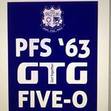Farouk Gulsara's Blog, page 24
June 27, 2024
A bit of Hyderabadi history
Director: Raj Durge
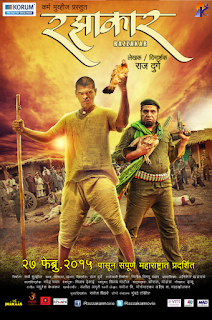 This part of Indian history is unfamiliar to most, especially those outside India. India had between 550 and 700 princely states, each under its monarchs, chieftains, or feudal lords. At the time of India's independence, at least two states wanted to stand alone and not join India or Pakistan. There was Kashmir, which had a Hindu Maharajah Hari Singh ruling over a Muslim majority. The other was Hyderabad, ruled by a Muslim Nizam over a predominantly Hindu population.
This part of Indian history is unfamiliar to most, especially those outside India. India had between 550 and 700 princely states, each under its monarchs, chieftains, or feudal lords. At the time of India's independence, at least two states wanted to stand alone and not join India or Pakistan. There was Kashmir, which had a Hindu Maharajah Hari Singh ruling over a Muslim majority. The other was Hyderabad, ruled by a Muslim Nizam over a predominantly Hindu population.Kashmir, as we know, went into chaos when Pakistani soldiers disguised as tribesmen created mayhem. Hari Singh went into exile, and the State eventually broke up. Its problems persist to date.
Down in Hyderabad, the wealthy Nizam was not ready to part from his wealth and power. It was believed that his subjects mostly wanted to be with India. During Indian independence, the Nizam had to quell a Marxist people's rebellion. The Nizam's army, aided by Qasim Rizvi, the leader of a firebrand Islamic political party, went on a killing spree. They killed many feudal lords and even peasants who were Hindus. The vigilante group that claims to be championing the Nizam's cause and the path of Islam, as they eventually aim to join Pakistan, called themselves 'Razakkar' (the Volunteers).
 Hyderabad was in a disadvantaged position. They were a landlocked state, and the fact that the Hindus were tortured gave India a legitimate reason for India to station its soldiers at its borders. The duel stood a standstill as the peasant fought back tooth and nail against the Razakkars. Indians moved in through 'police actions'. Hyderabad was annexed to India.
Hyderabad was in a disadvantaged position. They were a landlocked state, and the fact that the Hindus were tortured gave India a legitimate reason for India to station its soldiers at its borders. The duel stood a standstill as the peasant fought back tooth and nail against the Razakkars. Indians moved in through 'police actions'. Hyderabad was annexed to India.This 2015 Marathi film showcases an account of what some Hindu peasants in the State's periphery would have experienced under the tyranny of the Razakars. I am waiting for another version of the Razakkar's tale in the 2024 version.

 This work is licensed under a Creative Commons Attribution 4.0 International License.
This work is licensed under a Creative Commons Attribution 4.0 International License.This work is licensed under a Creative Commons Attribution 4.0 International License.
June 25, 2024
When you gaze into the abyss...
Director: Park Ba-ram
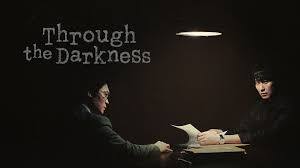 Over the centuries, humans have agreed on how they should live life. Compassion, tolerance, and acceptance have been the mantras to sail through the rough waves in the high seas of life. We respect the other with the adage 'Do not do unto others what you do not want others to do unto you' and think that should suffice for all to mind their own business and lead meaningful lives.
Over the centuries, humans have agreed on how they should live life. Compassion, tolerance, and acceptance have been the mantras to sail through the rough waves in the high seas of life. We respect the other with the adage 'Do not do unto others what you do not want others to do unto you' and think that should suffice for all to mind their own business and lead meaningful lives. Life, as we know it, has been so easy. As if there is not enough of Nature's hostility towards over existence, there is danger from our own kind. Nature has dictated species protect their own kind. Still, violence and savagery are justified in the name of the continuity of species and territorial ambitions, which, in a way, also ensure the dissemination and dominance of species. Only in the human species do we humans kill another for the sheer pleasure of seeing someone die. Our inquisitive mind yearns to know what lies beyond the realm of life. Sending someone to the Otherside or just stepping momentarily into the gate of death and stepping back in gives some unbelievably enjoyable thrill and erotism.
We are stepping into the zone of dark, mind-bending psychological crimes. Some wonder if we are all inherently evil. Is that any truth that this is because we are all born out of the Original Sin, that we are all sinners and are at the Mercy of the Divine for Redemption?
Did 'civilisation' or living in communities mould us to behave in a particular manner? Numbers matter when we are exposed to dangers day in and day out in our early days of existence.
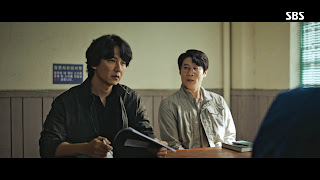
Remember our school days. Children who have not fully developed the inhibitory synapses of the frontal lobe say all the darnest. At the playgrounds, they can be pretty cruel, spewing venom with filters, leaving a spate of their schoolmates/playmates with developmental issues or social anxiety.
This Korean miniseries is not for the faint-hearted. It tells the tale of a criminal profiler and his team in the Behavioural Crime Analysis of the Seoul Metropolitan Police, who takes his work too seriously. Stemming from a near-drowning episode in his childhood, the detective develops the ability to empathise with both the victims and the perpetrators of the crimes he is tasked to solve.
This journey takes him and his dedicated team through a harrowing experience, questioning everything we try to pinpoint as the culprit to make someone turn to the dark side.

Is it the absence of a father figure as a child grows up? Is childhood trauma, sexual assault, corporal punishment, bullying or humiliation the culprit? Is the brain wiring to be blamed? What is at fault, Nature or Nurture? For every possible aggravating factor that may lure one to crime, many uproot themselves out of filth to be somebody. Is loneliness a precipitating factor? As Nietzsche said, 'If you gaze into an abyss, the abyss also gazes into you!'
What about the people who often associate, investigate and peep into the lives of these vermins of society? Do those who fight with monsters should look into it so they do not become monsters? Scriptures say, 'You are the company you keep with'. A calf which hangs around a piglet would eventually feed on filth like hogs usually do, Amma used to say!
Before we say the cases are hyped to appease the viewers, the cases were reported by Korea's first criminal profiler, Kwon Il-yong and journalist-turned-author, Ko Na-mu.

 This work is licensed under a Creative Commons Attribution 4.0 International License.
This work is licensed under a Creative Commons Attribution 4.0 International License.This work is licensed under a Creative Commons Attribution 4.0 International License.
June 23, 2024
Between your God and mine!
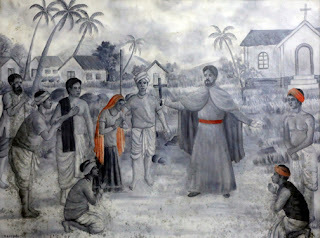 Goa InquisitionIt is probably due to cognitive dissonance. Finally listening, for once, to what they were saying, they must have had a revelation. It must have sounded so ridiculous that they must have thought of what they were smoking when they plunged head-on into the cult. Hey, heck no! They are not going to denounce everything. They had invested too much time, resources and life to give it away. The next best plan is to convince others. They would get the numbers. It cannot be so wrong if everybody buys their story. And they thought, while we are at it, let us monetise the whole concept!Hence, the worldwide inquisition started. Because they felt they had been told the inside story about the Creator and thought they knew the backstory of everything's creation, they walked around with a chip on their shoulders.
Goa InquisitionIt is probably due to cognitive dissonance. Finally listening, for once, to what they were saying, they must have had a revelation. It must have sounded so ridiculous that they must have thought of what they were smoking when they plunged head-on into the cult. Hey, heck no! They are not going to denounce everything. They had invested too much time, resources and life to give it away. The next best plan is to convince others. They would get the numbers. It cannot be so wrong if everybody buys their story. And they thought, while we are at it, let us monetise the whole concept!Hence, the worldwide inquisition started. Because they felt they had been told the inside story about the Creator and thought they knew the backstory of everything's creation, they walked around with a chip on their shoulders.It is funny how overconfidence leads to aggression. It does not feel wrong to inflict all the pain, injustices and cruelty upon another being because it is viewed as carrying God's will here on Earth. Nobody actually saw the memo or had the guts to ask the same. They risk the label of a heretic.
Another group would take the Word of God and spread it as a religion of peace but with violence and ambush. As if to soothe the bleeding wounds, they would send in nuns and nurses who have dedicated their lives to saving lives. To make the natives useful idiots, schools would be built with the conquerer's belief systems. Servants of God would parachute down to spread the Word and plead with compassion and forgiveness as if trying to whitewash their previous misgivings.
 Another method employed to subtly convert the next generation was through the boarding school systems. Horror tales of promising students uprooted from society with the promise of a better life, which ended with tragic ends of torture and death, are rampant in the Australian, Canadian and American aboriginal communities.
Another method employed to subtly convert the next generation was through the boarding school systems. Horror tales of promising students uprooted from society with the promise of a better life, which ended with tragic ends of torture and death, are rampant in the Australian, Canadian and American aboriginal communities.Just when you thought this was a footprint of colonial times, think again. Subversive religious conversion of adults and minors has always been ongoing below the radar. Much evangelism work was ongoing under the pretext of providing educational, medical and emotional support. Good for them.
Recently, a video flared up on social media of strategies for converting Malaysian secondary school students and keeping their religious conversion under wraps until they reach adulthood when they are free to profess their religion of choice.
 Firdaus Wong is sharing advice on TikTok with teachers
Firdaus Wong is sharing advice on TikTok with teacherson converting their students to Islam without their
parent's knowledge. F.B. pic; June 6, 2024.This naturally created a lot of apprehension amongst parents who saw schools and other governmental institutions as hotbeds for religious activities. Murmurs about this had been in the people's consciousness all this while. Still, everyone naively believed that the Nation had adequate laws to protect people of different belief systems from professing their religion of choice. If formerly conversions were done at the end of the sword, now it is insinuated through subtle reasons like economic prosperity and rebel yells of the ignoramus.
For anyone to trust the legal system, laws must be carried out, and justice must be seen to be done. Over the years, as evidenced by the pile of cases taken up by NGOs against the State, citizens cannot be blamed if they were to think that there exists a sinister plan to subjugate one religion over the others. -------------------------------------------------------------------
P.S. As any other Indian mother would, Amma was apprehensive when her much-loved son had to spend two years training in a state in the Malay heartland. Her circle of friends constantly told her tales of many promising young Hindu men falling flat for the fauna and flora, fawning over females there, returning home with a different name and surname, spotting moustache-less beards, and refusing to partake in functions deemed necessary by their parents, i.e. final rites and ancestral worship. So, Amma saw a shaman to make an amulet to ward off evil spells. The only restriction to be observed while wearing the amulet was that it should not be worn in places considered unclean with negative energies. Well, what does the shaman expect in a hospital? Of course, there will be deaths, suicides, diseases and all the negativities that need correction! As a good son, yours truly did don the contraption. Expectedly, Amma had thought too highly of her offspring. He fell for the flora and fauna, but there was no inkling of fawning over or by someone!

 This work is licensed under a Creative Commons Attribution 4.0 International License.
This work is licensed under a Creative Commons Attribution 4.0 International License.This work is licensed under a Creative Commons Attribution 4.0 International License.
June 21, 2024
A historical figure not often mentioned!
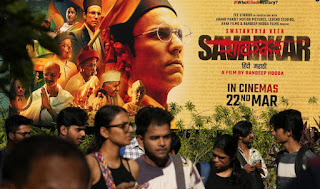 It is funny how names like Savarkar, Bhagat Singh and Subash Chandra Bose escaped our consciousness when we were taught Indian history in school. We were only told of Mahatma Gandhi, the Indian Congress Party and their brand of civil disobedience. Gandhi's passive demeanour, recurrent fasting, and imprisonment eventually won India's Independence. Oh, right! Savarkar and the gang were branded as terrorists and troublemakers, destroying the order, culture and modernity the highly evolved superior race brought to the lost natives.
It is funny how names like Savarkar, Bhagat Singh and Subash Chandra Bose escaped our consciousness when we were taught Indian history in school. We were only told of Mahatma Gandhi, the Indian Congress Party and their brand of civil disobedience. Gandhi's passive demeanour, recurrent fasting, and imprisonment eventually won India's Independence. Oh, right! Savarkar and the gang were branded as terrorists and troublemakers, destroying the order, culture and modernity the highly evolved superior race brought to the lost natives. Now, we are told of alternative narratives of events that may have happened during the 200 years of the Raj's rule in India. The victors control the narratives, but entertaining the other side of the story is worthwhile. Let us not forget that the immediate reason for the British's sudden exodus from Bharat was not just the bludgeoning British debt to India incurred during WW2 but the Indian Navy Mutiny that kicked out around the time of the trial of captured INA soldiers in 1946.
Savakar has always been and is still labelled a bad boy. He used the word 'Hindutva' way too often to make British and non-Hindus hot under their collar. Even in today's context, the mention of Hindutva brings forth the image of a saffron-donning warrior hoisting a flag with an image of a ferocious-looking Hanuman as a motif. In the eyes of those in opposition to the second-term ruling party BJB, this is a dog whistle for the battle for Hindu domination, a.k.a. Hindutva.
Not in Savarkar's mind, however. He chose the path of aggression against the invaders. The secret society 'Abhinav Bharat' was his brainchild. It became a nidus for many young spirit men to take arms to assassinate British leaders who wronged Indians. Savarkar looked at Hindutva as a political, geographic, and cultural movement linked to the region from the Sindhu River to the ocean that is Bharat, as it is considered their ancestral land. He used the concept of Hindutva to reel the masses, Hindus and non-Hindus alike, to chase out the invaders. Unfortunately, in modern times, it has taken an oppressive meaning to mean to oppress the minority, the weak and the downtroddden in the fringe of society.
Even as a student at Ferguson College in Pune, he was a rabble-rouser. Being a brilliant student, he managed to secure a place to study law in London with the help of local sponsors who were also quiet revolutionaries. It was in London that he blossomed. He landed in India House in Highgate, the hub for Indian revolutionaries. Famous icons like Madam Cama (who brought India's plight to the Socialist Forum in Stuttgart in 1907 and unveiled India's 'Tricolour' with the word Bande Mataram and logos representing significant religions of India), Madan Lal Dhingra (who assassinated the officers of the Secretary of State for India, Curzon Wyllie) and many other rebels had met Savarkar there.
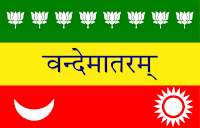 Early Tricolour -1907In 1907, Savarkar wrote 'The War of Independence' in response to Britain's celebrations of the quashing of the 1857 Indian Rebellion. This mutiny also called the Sepoy Mutiny, caused the British to introduce tight gun control and draconian measures to curb Indian resistance. Savakar's book has become the handbook for future Indian freedom fighters who opted for Independence through armed resistance. Savarkar looked at the 1857 mutiny as India's First War for Independence.
Early Tricolour -1907In 1907, Savarkar wrote 'The War of Independence' in response to Britain's celebrations of the quashing of the 1857 Indian Rebellion. This mutiny also called the Sepoy Mutiny, caused the British to introduce tight gun control and draconian measures to curb Indian resistance. Savakar's book has become the handbook for future Indian freedom fighters who opted for Independence through armed resistance. Savarkar looked at the 1857 mutiny as India's First War for Independence. In 1910, Savarkar was arrested for multiple charges, including starting a war against the Crown and was deported to India by sea. When the ship docked at Marseilles, he attempted a dash to freedom but was rearrested and returned to the British after much deliberation. In India, he was sentenced to fifty years at Kala Pani in Andaman Island. The world passed him by. His brother was also jailed on the same island, but they never met till much later. The state confiscated his family property, and his wife, mother, and sisters lived as paupers. Savarkar's degrees were withdrawn.
By 1921, Savarkar, after writing many petitions after petitions, was transferred to Ratnagiri prison on the mainland. He obtained restricted release by 1924.
He was ideologically opposed to many of Gandhi's proposals. He felt Gandhi and the Congress Party were too appeasing to the British demands. It was no wonder why none of the Congress members were ever jailed in Kala Pani. Gandhi's Sathyagraha movement was oppositional to his violent approach to clinching Independence. Savarkar suggested that Indian youths should partake in British Army training and combats, in contrast to the Quit India movement and Congress's refusal to enlist for war. These exercises, he thought, would be helpful in the Indian War of Independence later. Savarkar was also inimical of the Khilafat movement.
As the head of the Hindu Mahasabha, he allied with the Muslim League to successfully compete in many provincial elections.
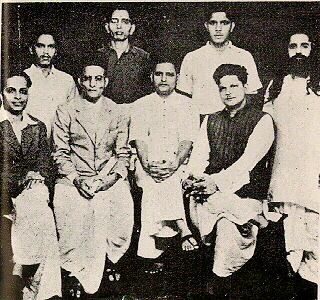 Be careful with whom you pose in a photo.
Be careful with whom you pose in a photo.Here, Savakar (centre) is seated beside Godse
(dark half-jacket)Savarkar is reputed to have helped to erect the Patit Pavan Mandir when Orthodox Brahmins refused to let Dalits into their temples. It now runs an annual Ganesh festival, which all castes attend.
After Gandhi's assassination in 1948, Savarkar's name was dragged in again. The assassin, Nathuram Godse, was a member of the Hindu Mahasabha and RSS and had allegedly had a meeting just before the said killing. The Kapoor Commission was set up to ascertain his involvement, but the decision was left hanging. Only in 2018 Savarkar's name was erased as the co-conspirator of Gandhi's shooting.
Savarkar died in 1966, soon after his wife's death. He fasted himself to death, refusing food, water and medicines as he felt his work on Earth was done.
The irony of all is that the man of passive resistance, Gandhi, died a violent death. In contrast, Savarkar, who advocated violence as the means to win Independence, died in a relatively passive way without giving a fight.

 This work is licensed under a Creative Commons Attribution 4.0 International License.
This work is licensed under a Creative Commons Attribution 4.0 International License.
This work is licensed under a Creative Commons Attribution 4.0 International License.
June 19, 2024
Of Hope and Fear!
Film Series, 2012, 2013, 2014. 2015, 2023
 There is a thin line between having hope and fear about things happening our way. To quote Baruch Spinoza, there is neither Hope without Fear nor Fear without Hope. This applies at an individual level when one wants to pull himself up with his bootstrap. He may tell himself not to fear the unknown but to hope for a better future.
There is a thin line between having hope and fear about things happening our way. To quote Baruch Spinoza, there is neither Hope without Fear nor Fear without Hope. This applies at an individual level when one wants to pull himself up with his bootstrap. He may tell himself not to fear the unknown but to hope for a better future.Hope is not a bad thing when things look hopeless. To hope and not strive is foolhardy. That must be the reason why 'hope' was one of the reasons it was found to be one of the contents still lingering in the Pandora Box when it opened. Perhaps it was the lesser of the evils, as all others had escaped.
To rule over a group of people, politicians create fear among their subjects. The goal is to create so much fear that the subjects will succumb to the pressures and submit to the demands of the oppressors. At the same time, to avert retaliation, the subject must be given a little hope—just a little, not much. Give a little rope at a time, just enough until it is long enough for them to hang themselves. The oppressors will then continue reigning over their subjects. Just a nice set-up. This must have been in Michiavelli's cookbook 'The Prince.'
'Hunger Games' is a trilogy of movies based on a novel about a dystopian future where a country named Panem is ruled by a cruel regime. Each district must send a representative to its annual non-holds-barred blood sports game. The winner kills all the other opponents for the sheer entertainment of the ruling class. While the rest of the country lives in abject poverty, there is lavishness and opulence in the Capitol.
As the film took to a cult-like following, the moviemakers decided to produce a prequel to the whole thing. The last offering is about how the evil President, Snow, came about to be the person he is. Starting as a poor citizen, he worked his way through rank and file as a soldier to seize the opportunity to survive and climb the ladder of opportunities. The question is, at which point does chasing the elusive dream filled with overtaking and suppressing others turn to evil?
(P.S. The interplay of hope and fear is the pathognomonic of Malaysian politics. On the one hand, the optimists have been seeing a glimmer of hope that things will improve and soon see his nation with its head held high. The politicians also see this. They frequently fan the fear of one group overpowering the other. They sell themselves as the saviours of the status quo. The leaders paint a dystopian future where the majority would be oppressed and homeless. The realists have no time for all these. They merely seek greener pastures.)

 This work is licensed under a Creative Commons Attribution 4.0 International License.
This work is licensed under a Creative Commons Attribution 4.0 International License.
This work is licensed under a Creative Commons Attribution 4.0 International License.
June 16, 2024
Learn to agree to disagree!
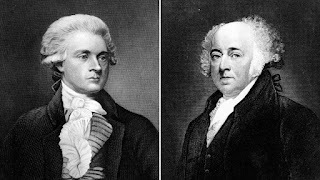 President Thomas Jefferson, left, and his predecessor,
President Thomas Jefferson, left, and his predecessor, President John Adams. (Feuding Fathers)
Getty ImagesAt this time of one's life (stepping into the seventh decade of existence), one often wonders about all the people who made their appearances all along my life. Some of theirs were short and sweet. Some left with a sour aftertaste. Some got lost in the annals of times. Occasionally, I had people who took everything wrongly and left anything but amicably. One did not like the sight of me and had nothing nice to say about me. Well, what can I say but that the feeling was mutual.
Recently, I read about the friendship between the two Founding Fathers of the United States of America. They were not really best friends. They had a big job to do for a greater cause. They looked at things from different perspectives; both felt compelled to defend their conviction until the end. Towards that end, they argued ferociously and wrote stinging letters to each other but all the time, acquiring brickbats and respect simultaneously.
After the British were sent packing from the 13 colonies of the New World, the new nation had to decide how to run its country. Would they want tight central control like the British had before Independence? They realised every colony had its own need, and to have one vision for the whole nation would be disastrous. It was like the British all over again. The other side was modelling a country with Republic principles after Rome.
 The Independence Declaration was no divine decree. For a long time, the founding could not agree upon its execution. Adams believed in a strong central government, whereas Jefferson championed states' rights. They competed against each other for Presidentship after Washington refused to hold the post for a third term. Adams became the second President of the USA. He offered Jefferson the post of Vice President, but Jefferson declined. The subsequent election was won by Jefferson, leaving Adams bitter.
The Independence Declaration was no divine decree. For a long time, the founding could not agree upon its execution. Adams believed in a strong central government, whereas Jefferson championed states' rights. They competed against each other for Presidentship after Washington refused to hold the post for a third term. Adams became the second President of the USA. He offered Jefferson the post of Vice President, but Jefferson declined. The subsequent election was won by Jefferson, leaving Adams bitter.The duo refused to communicate with each other for 12 years till a fellow Declaration signer, Benjamin Rush, made them write to each other. They vehemently argued the merits of their convictions via more than the 185 letters that they wrote to each other. Each did not want the other to outdo them. Coincidentally, they died four hours apart on July 4th, Independence Day. A sweet end to two men who gave much of their lives to the foundation of America.
Closer to home, I recall another intense discussion panel that my friends and I used to attend. It was an adrenaline-rushing, temper-flaring, emotionally charging discussion on life and its meaning. We learned many things from each other that no teacher or school could teach. All that came to zilch because of some other unrelated miscommunication. Now, we are all left groping in the dark again, finding our own answers alone through our own follies.
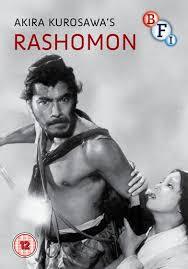 Rashomon: The Truth Is Often Mutable And Ambivalent
Rashomon: The Truth Is Often Mutable And AmbivalentWe should learn that opinions vary. We should learn to agree to disagree. The truth is an elusive shadowplay. As Rashomon tells us, the truth has many forms. All can be right.

 This work is licensed under a Creative Commons Attribution 4.0 International License.
This work is licensed under a Creative Commons Attribution 4.0 International License.This work is licensed under a Creative Commons Attribution 4.0 International License.
June 13, 2024
The boat left when we were busy squabbling!
(Indian Community Political Struggle and the Leadership of Malaysian Indian Congress 1946-2020) (Malaysian Language; 2023) Author: Periasamy Muthan, M.A.
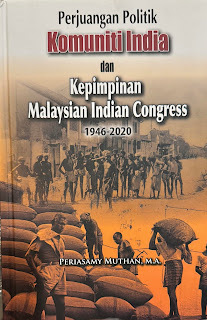
The story of Indians sojourning in the Malayan peninsula goes way back to a time before any form of Malay influence was seen here. Traces of its Swarnabhumi history, which is really the root of the cultural civilisation of this region, were systemically hushed by the ruling class to put their version of Malaya where it sprung out of nothing to be civilised by Muslim traders and thinkers.
After the first wave of Indian settlers, who came in around the time of the Malacca sultanate, the second wave arrived at the end of the nineteenth century with the British clerical team. The bulk of Indians, however, were brought in to work in the sugarcane, coffee, and later rubber plantations in the early 20th century. Working under slave-like conditions, the natural leaders amongst them started voicing their dissent.
Even as early as 1923, MIA (Malayan Indian Association) was started, mainly to echo the sentiments of their brethren back home in India against the British colonial powers. They were not really interested in local politics initially. Later, blatant discriminatory wages between the Chinese and Indians spurred demand for rights. In the 1930s, workers got a pittance even when the world rubber price was high. Indian groups soon picked up this issue. Also, by that time, colonist-sanctioned toddy drinking had become a significant social problem. MIA morphed into CIAM (Central Indian Association of Malaya). MIC (Malayan Indian Congress) came to being in 1946. Toddy abuse became a national issue by 1947. Easy access to the vile concoction was blamed.
Living conditions took a turn for the worse during the Japanese occupation. When the British returned after the Second World War, they proposed changes in the country's administration. The Malayan Union stirred strong opposition from the Malays, who considered themselves the land's indigenous people. The Straits Settlements were essentially carved off as British colonies, and the powers of the Malay royalties were clipped.
Funny, the royalties did not raise an eyebrow; they were just ready to ink their signatures on the dotted lines. It was really the educated Malays and political parties who raised hell. The non-Malay groups took interest when the issue of citizenship came up.
By the 1940s, soon after Nehru's and E.V. Periyar's visits, Indians in Malaya started looking at Malaysia as their nation rather than India. India soon became to be seen as Siberia for ethnic Indian wrongdoers who were exiled to India.
In the post-WW2 era, when the British Malaya Administration took charge, many political groups had been established. Some of them were race-based, while others were workers union-based. Communist Party Malaysia was also active in fighting for workers' rights. A truly multiethnic Malayan party was formed with the collaboration of MPAJA, Workers Party, and PUTERA many….. with CPM also giving its input. Guess what? MIC, at its infancy, was a firebrand party led by many professionals who were more interested in fighting the colonial masters rather than playing ball with the colonial master to usurp goodies. MCA and UMNO did just that, to earn business contracts and political favours.
The Malay loyalists, Chinese businessmen, and Indians of Ceylonese descent were quite content with British control of Malaya. They benefitted from their close association and could see no need for self-rule. So when the British finally decided to dispose of their cumbersome colonies after milking them out for decades, they chose to pass the baton to the moderate multiethnic party of the UMNO-MCA alliance rather than to the MPAJA-PUTERA coalition because of its leftist and communist link to it.
The early MIC (morphed from MIA) was a firebrand party that opposed many colonists' ideas. MIC was seen as the spokesperson for the oppressed working-class Indians. With frequent changes in its leadership, MIC evolved to become a Tamil-centric party acting as a voice for estranged estate workers. The earlier leaders were comprised of Punjabis and other North Indians. By 1955, with VT Sambanthan at the helm, the focus was enriching the poor Indians. He proposed a plan to make them landowners.
Cooperating with the majority and going all out to maintain peace and harmony has drawbacks. The top leadership took them as pushovers. It has been mentioned elsewhere that Tunku's top brass leadership sometimes bypassed Sambanthan's input. Tunku is heard to have said, "Sambanthan will agree!"
Sambanthan and many of its subsequent MIC leaders faced stiff criticism from its members. New leaders often came up with ideas that achieved little success. By the 1980s, MIC had gained a dubious reputation for being a loud, argumentative, and political party with chair-hurling members. Many private halls denied renting their premises for MIC functions. MIC finally had to build its own headquarters.
Over time, caste politics crept in. Different factions tried to change the party's direction and how it wanted to improve Malaysian Indians' well-being. Many of its projects could have flourished to their full potential, but sadly, they did not. The later leaders were accused of being autocratic.
Malaysian society under Mahathir's leadership underwent cataclysmic changes. In his rapaciousness in churning out Malay millionaires overnight, he made significant policy changes. He introduced novel ideas like privatisation and established statutory bodies to improve Malay participation in the nation's economy. Many rubber and palm oil estates were cleared for development. Due to the dearth of adequate vocational skills or academic brilliance, the poor Indians were stuck in the lower rung of the chain and plunged even further down.
MIC and its leaders will claim how successful they have been over the years. The proof of the pudding is in the eating. Unlike other countries in the world where Indians are seen holding important professional and academic posts, the situation here is different. Over the years, Indians' economic grip has obviously dwindled. Members of this ethnic group have acquired the unenviable reputation of comprising gangsters and blue-coloured workers. Our prisons have a disproportionately high percentage of Indians. Death of Indians in prison is an accepted norm, indicating how bad their reputation is. Entrance to institutions of higher learning is depressingly low. The civil service, which was at one time reaming with Indians, now is clearly low.
The Hindraf rally in 2007 was the turning point that brought to the fore the ruling government's overtly systemic discriminatory, racist policies. The hegemony of MIC as the sole representative of Indians in the country was shaken. Even after many elections since then, nothing much has actually changed.
I once asked a senior doyen of an observer of Malaysian Indian politics about their discordant improvement of the ethnic group in the country. Look around the world. The Indian diaspora has been labelled as a go-getter able to pull themselves by their bootstraps in no time. Testimonies of these are aplenty - the U.K., Fiji, Uganda, the USA, Trinidad and Tobago, Surinam, Guyana, South Africa and even Tanzania. Who should carry the burden of messing up? Without batting an eyelid, he uttered, ""he leadership"" As we have heard many times before, people are very fickle. They need to figure out what they want. The natural leader amongst them (like a Moses or a Gilgamesh) would rise to show new horizons. Sadly, the boat left while we were still donning our socks.

 This work is licensed under a Creative Commons Attribution 4.0 International License.
This work is licensed under a Creative Commons Attribution 4.0 International License.
This work is licensed under a Creative Commons Attribution 4.0 International License.
June 11, 2024
The Maoists and the urban Naxalites!
Director: Sudipto Sen
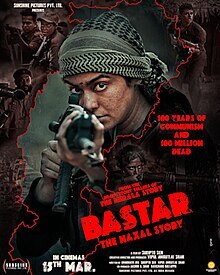 This is supposed to be inspired by actual events. That part may be accurate, but the problem is that this part of Indian history has been ongoing for so long that the moviemaker took the liberty of cutting and pasting events that happened at different times in India's history.
This is supposed to be inspired by actual events. That part may be accurate, but the problem is that this part of Indian history has been ongoing for so long that the moviemaker took the liberty of cutting and pasting events that happened at different times in India's history. For the record, there was a rebellion in 1910 when the British were eyeing the minerals in Central India. Come to think of it, that may be when the word 'thug' came into the English language. Tribal people who resisted British invasion were labelled as carnivorous people worshipping a blood-thirsty form of Kaali named Thugeesewari. The tribals donned machetes for farming but were labelled as armed resistance forces instead.
In the late 60s, when the Communist Party of India split after the Sino-Soviet split, a group of them had the idea of a peasant revolution changing the status quo. This group came to be named Maoist (after Chairman Mao). In 1967, in Naxalbari, tribal people fought with armed forces for land, aided by radical left-wing Maoists. After that, they came to be called Naxalites. In the region's most remote areas, in the spine of India, cutting up to 10 states, the Naxalites took charge with their own brand of justice, local panchayat, and control of amenities.
Naxalite activities have been going sporadically. Occasionally, news of skirmishes along this 'red corridor' emerges.
In 2010, 76 Indian Central Reserve Police Force personnel were killed in Dantewada district in Chattisgarh. This was sort of the starting point for the movie. Before that incident, an advaasi (tribal person) was hacked to death for hoisting the Indian flag. The vendetta against the Naxalite leader spurred the widow to join forces with the police to fight the terrorists.
In the background is a trial in which the State Government is accused of forming a paramilitary vigilante force named Salwa Judum under the auspices of the ruling party. The accusers were concerned social activists and academics. The movie insinuates that the leftists of the world have united and are having a stronghold and working in tandem with academicians, Bollywood, writers, politicians, and even the judiciary. There is a not-so-veiled reference to Arundathi Roy as a leftist sympathiser.
The silver lining behind the above incident is that things have improved since then. Violence has de-escalated, infrastructure has improved, and tourism has increased by many folds.

 This work is licensed under a Creative Commons Attribution 4.0 International License.
This work is licensed under a Creative Commons Attribution 4.0 International License.This work is licensed under a Creative Commons Attribution 4.0 International License.
June 9, 2024
Retelling of Ramayana?
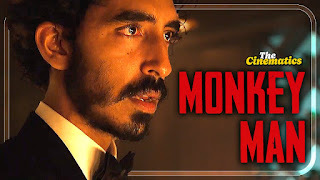
At first look, one is forgiven for thinking it was going to be a non-cerebral offering with senseless violence, gore, pyrotechnics and stunts that defy science principles. On further viewing, one would assume there would be lots of Indian bashing, Hindu culture ridiculing and Modi shaming. It cannot be so wrong.
Far from it, this is also an attempt to retell the Ramayana story. In the Ramayana narration of events around 5000 BCE, King Rama was exiled for 14 years into the forest after political arm-twisting led by his stepmother. Raavan became the villain when Rama turned down Ravana's sister, Shurpanakha's sexual advancement. And Rama slashed her nose. Raavan kidnapped Rama's wife, Sita. Rama, in search of his missing wife, Sita, befriended Hanuman, and the rest is history, as written by Valmiki and others.
In the Ramayana, Rama and Hanuman are on the side of the truth, whereas Raavan, with his 10 branches of wisdom, assumes the protagonist role. However, this film version deliberately mixes up the roles of the hero and villain.
Monkey Man is a streetfighter who appears regularly at an underground no-holds-barred mixed martial arts fight scene for a measly stash of cash. He has a dark secret from his past for which a score must be settled.
 In that town, there is a heartless businesswoman who basically controls all the vices around. The men in power support her activities—the police chief and his yeomen, the strongmen in town, the politicians, and the saffron-robed man of God.
In that town, there is a heartless businesswoman who basically controls all the vices around. The men in power support her activities—the police chief and his yeomen, the strongmen in town, the politicians, and the saffron-robed man of God. The fighter, @ Bobby, @Kid, grew up as a tribal kid with his loving mother at the edge of the forest, but greedy businessmen ruthlessly burned their house to take over their land. His mother was lit alive by the police chief right in front of his eyes in his childhood - hence the need to avenge.
To build up the climax to the eventual destruction of the corrupt system, the audience is feasted to (or has to sit through, depending on your taste) minutes of swashbuckling and pumping of adrenaline done in the veins of 'Kill Bill', 'War of the Dogs' or any of the Hong Kong fast-paced kungfu movie fast-moving cameras. Actually, the action sequences are of high standards.
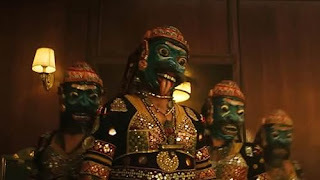 The way I see this movie is told is that of a modern tale of Ramayana. A leftist embroiled in anti-Hindu sentiments always looked at modern Rama as an intruder. He intruded on the forest, initially occupied by the Adivasis, to upset their equilibrium by invading their space and hunting their food. In a screwed-up way, in modern-day Ramayana, Ravana is not the lone villain but has joined forces with Rama. Symbolically, Rama is referred to as the safron-clad religious man. He is in cahoots with other branches of power. Allegorically, they are represented in the ten heads of Ravana.
The way I see this movie is told is that of a modern tale of Ramayana. A leftist embroiled in anti-Hindu sentiments always looked at modern Rama as an intruder. He intruded on the forest, initially occupied by the Adivasis, to upset their equilibrium by invading their space and hunting their food. In a screwed-up way, in modern-day Ramayana, Ravana is not the lone villain but has joined forces with Rama. Symbolically, Rama is referred to as the safron-clad religious man. He is in cahoots with other branches of power. Allegorically, they are represented in the ten heads of Ravana.So, Hanuman, as the last man standing, has to go rogue to defend his people. He is Bobby @ Kid, trying to right the wrong, undoing the sins of the religious leaders, tycoons, political leaders, the police and the whole cabal of oppressors of the marginalised.
At the end of the day, even though it was filmed in Batam, Indonesia, the whole show primarily aims to paint India as a lawless country. By repeatedly showing Hindu iconography in many of its frames, it tries to showcase Hindu culture as twisted. Everyone is corrupt, and there can be no redemption.
Is it a mere coincidence that its release is eerily in the year when India, the biggest democracy, is about to re-elect Modi for an unprecedented third time? Still, the movie has a high entertainment quotient and high-value production. It is highly recommended for the curious-minded who do not mind the occasional head-butting. (Or is it butthurt?)

 This work is licensed under a Creative Commons Attribution 4.0 International License.
This work is licensed under a Creative Commons Attribution 4.0 International License.
(function() {function signalGooglefcPresent() {if (!window.frames['googlefcPresent']) {if (document.body) {const iframe = document.createElement('iframe'); iframe.style = 'width: 0; height: 0; border: none; z-index: -1000; left: -1000px; top: -1000px;'; iframe.style.display = 'none'; iframe.name = 'googlefcPresent'; document.body.appendChild(iframe);} else {setTimeout(signalGooglefcPresent, 0);}}}signalGooglefcPresent();})();>head
</This work is licensed under a Creative Commons Attribution 4.0 International License.
June 7, 2024
Sure you didn't!
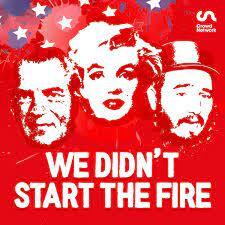 In the mid-1980s, a young person commented to Billy Joel. In the young person's mind, the world of the 1980s was plagued with tumultuous events. In passing, he said, "I bet the world must have been a more peaceful place when you were growing up."
In the mid-1980s, a young person commented to Billy Joel. In the young person's mind, the world of the 1980s was plagued with tumultuous events. In passing, he said, "I bet the world must have been a more peaceful place when you were growing up."That got Billy Joel thinking. He started jotting down all the significant events from his birth in 1946 throughout his time growing up in New York till the summer of 1989.
Like that, he came up with close to 119 incidences that impacted him at least. He started arranging the list, like a good composer would, and wrote a record-smashing hit that everyone in the 90s would know.
Billy Joel realized as he reminisced about the years that went by that the world had always been a restless place. Looking back on the events, one thing is clear: It was as unsettled then as it is now.
The list he came up with became a narration of all the events that happened in post-war America and even the rest of the world. It even became the history syllabus for many schools in a few states. Katie Puckrik and Tom Fordyce decided to make a podcast out of the whole thing. They interviewed experts relevant to the subject for each of the 119 events, personalities or political events mentioned in the song. What transpired at the end is close to 90 hours of banter and history lessons that are excitingly interlaced with wisecracks and jokes.
Completing all the podcasts makes me feel like I'm in slumber while everybody else is doing the stuff. Many things were below the radar, and time is the best teacher for what happened in the past and will happen in the future. Many more things happened in the background without the rest of the world's knowledge. Some events still remain enigmas, which the world will never know, like whether Oswald's bullet really did kill JFK on the fateful day in Dallas.
Starting with Harry Truman and his questionable decision to drop the nuclear bomb in Japan, the podcasters dissect Doris Day. And we soon discover that her life was not like the 100-watt sunshine smile she flashes in her movies. Her life ambition was crushed when she was involved in a motor vehicle accident early on life. She had to switch careers. Married with a child by 22, life was not easy. Married four times, in the later stage of her life, she had fought court case after court case to retrieve her life savings from her lawyer, who had swindled her.
Like that, we learn about what has been happening in the background beyond the glitz of neon and what is printed in the media. It ends with the late 1980s staged Cola War between Pepsi and Coke—a fake war started to create publicity while the fizzy drink makers laugh all the way to the bank. Perhaps if the song had been written a bit later, he would have written about the fall of the Berlin Wall and the collapse of communism.
We didn't start the fire, It was always burning Since the world's been turning We didn't start the fire, No, we didn't light it But we tried to fight it
The Imperialists, specifically the Americans, in the post-war era, can deny all they want that they did not start the chaos that is rampant around the world. The sad truth is that the turmoil we are in has its roots deeply planted by the actions of people before us, intentionally or otherwise. For one, the current Middle East Crisis originates from the Imperialists' interference in the regional exploration and usurping of black gold and strategic power control of local politics. They fanned fires to appear as peacemakers akin to pinching the baby's bottom and singing lullabies simultaneously. While they were at it, they decided to sell arms to both warring sections. Why not? And sing 'We didn't start the fire, it was always burning...'
(P.S. Highly recommended for history geeks.)

 This work is licensed under a Creative Commons Attribution 4.0 International License.
This work is licensed under a Creative Commons Attribution 4.0 International License.</This work is licensed under a Creative Commons Attribution 4.0 International License.

